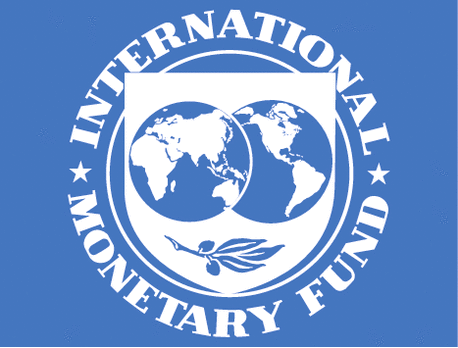WASHINGTON, (APP): The International Monetary Fund (IMF) has
welcomed Pakistan’s commitment to lower the fiscal deficit to 4.3 percent in the year ending June 30, and said the country’s growth is expected to
reach 4.5 percent this year, while remaining well-anchored by prudent monetary and fiscal policies.
In a detailed statement on the 10th review of Pakistan’s economic
performance which IMF approved last month, the IMF said that economic activity continues to strengthen gradually. After approving the 10th review, the IMF has already released $502 million tranche of a $6.6 billion loan secured in 2013.
“While a very weak cotton harvest and the continued decline in exports
are weighing on economic activity, real GDP growth is expected to reach about 4.5 percent in FY 2015/16, supported by large-scale manufacturing, investment related to the China Pakistan Economic Corridor (CPEC), buoyant construction activity, a recovery in private sector credit growth, and gradual improvements in the supply of gas and electricity.”
The IMF welcomed the ongoing commitment to maintain fiscal consolidation
in FY 2015/16 and over the medium term. It noted that the Pakistani authorities were determined to lower the budget deficit to 4.3 percent this year and to 3.5 percent in the next fiscal year by building fiscal buffers against adverse shocks, safeguarding macroeconomic stability, and setting stage of sustainable and inclusive growth.
The IMF Executive noted that tax collection significantly strengthened
in the second quarter and is slated to further benefit from the full-year effect of recent revenue measures, including increases in petroleum taxes and the introduction of regulatory duties and excises on a variety of products.
“Continued tax administration reforms are important for further
improving tax compliance and supporting revenue mobilization,” the statement said.
“Tax collection significantly strengthened in the second quarter and is
slated to further benefit from the full-year effect of recent revenue measures, including increases in petroleum taxes and the introduction of regulatory duties and excises on a variety of products.”
The IMF described the financial indicators as sound and said that the
banking system has remained profitable and well capitalized. Nonperforming loans (NPLs) decreased to 11.4 percent in December 2015.
Private sector credit growth has recovered to 8.6 percent in December
2015. Despite this overall favorable picture, two banks have fallen below the minimum Capital Adequacy Requirement (CAR) and two other banks are still below the minimum capital requirement (MCR), and the authorities are addressing these shortfalls.
Pakistan’s fiscal performance in the first half of FY 2015/16 was in
line with the programme targets, the IMF said adding that in some important areas, the government over-performed.
“The performance criterion (PC) on the general government budget
deficit (excluding grants) was met with a comfortable margin of PRs 84 billion (about 0.3 percent of GDP) as the authorities kept expenditures under control.Revenue growth accelerated from 11.6 percent year-on-year in the first quarter of FY 2015/16 to 23.8 percent in the second quarter and made up most of the first quarter’s shortfall.
The IMF welcomed further progress in expanding the coverage and the size
of targeted cash transfers to support the poor and most vulnerable through the BISP. The coverage of the BISP programme continues to expand in order to progressively include identified poor households. It reached 5.21 million beneficiaries in December 2015 and is on track to reach 5.3 million beneficiaries by end-June 2016.
The IMF also praised the new country-wide strategy to improve the
business climate recently developed by the authorities. This new strategy defines specific time-bound measures to improve the business climate, including at the provincial level.
International News
IMF welcomes Pakistan’s commitment to lower fiscal deficit to 4.3% in 2015-16
